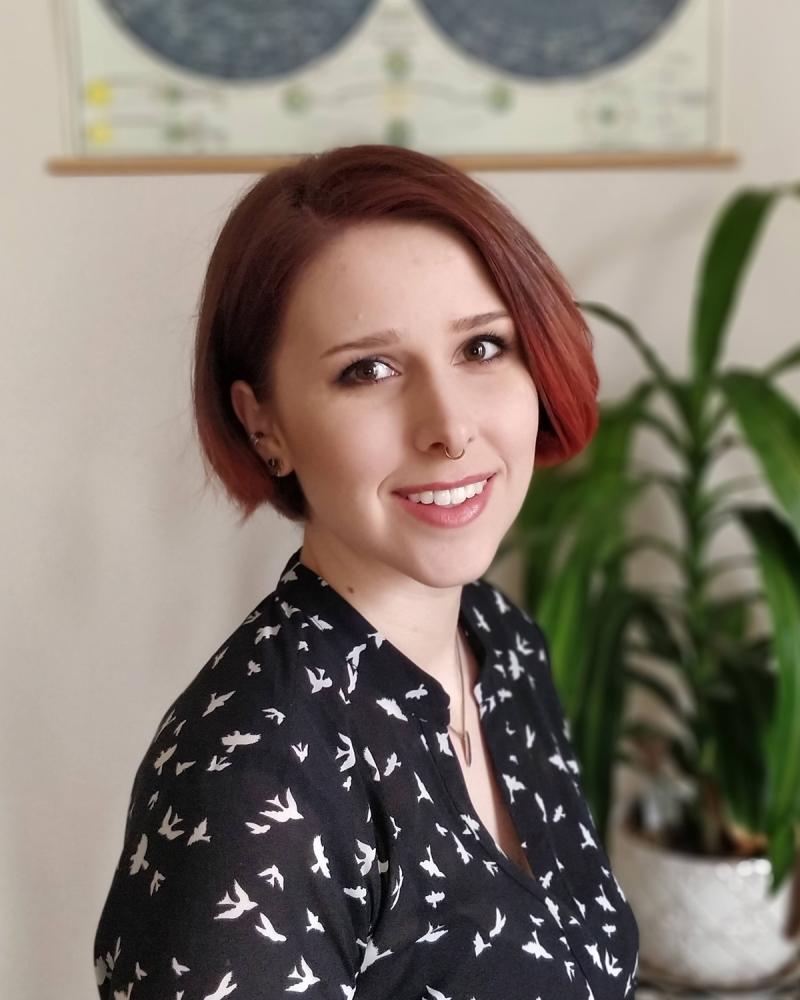Data
Erika Holmbeck is Selected as NASA Hubble Fellow

In a press release today, NASA announced its 2021 new fellows for its prestigious NASA Hubble Fellowship Program (NHFP). Out of more than 400 applicants, JINA-CEE member Erika Holmbeck was selected as one of the 24 fellows of 2021. The fellowship supports outstanding postdoctoral researchers for up to 3 years to pursue independent research that contributes to the NASA Astrophysics division.
Erika Holmbeck was born and raised in California, and received her undergraduate degree in astrophysics from the University of California Los Angeles. She joined the University of Notre Dame in 2015 to study nuclear astrophysics alongside Rebecca Surman and Timothy Beers, and completed her PhD in 2020. Erika currently works as a postdoctoral researcher at the Rochester Institute of Technology in New York, and will start her NASA Hubble Fellowship this fall at the Carnegie Observatories. She chose this host institution for their access to the right telescopes for her proposed project. Her proposal "The R-Process Refinery: Distilling Stellar Signatures to Characterize the Astrophysical Production Site of the Heavy Elements" was selected to help answer one of NASA's big questions about the universe: How did we get here?
We interviewed Erika for the JINA-CEE Faces section of our March Newsletter:
Could you tell us what becoming a NASA Hubble fellow means to you?
-Earning one of these fellowships is extremely validating. Clearly someone else believes my research is worth funding and supporting. I plan to stay in academia long- term, and this fellowship increases that possibility and opens the door to new opportunities.
When did you decide to pursue a career in science?
-I’ve been interested in science for as long as I can remember. Both my parents worked in the aerospace industry, so that exposure had something to do with my interest in space. I had considered studying genetic engineering for a while in high school, but then decided on astrophysics, always with the idea of figuring out how elements are made in the cosmos.
How do you interact with JINA-CEE?
-I actually found out about JINA for the first time when I was looking for graduate schools through Google. I intentionally applied to schools where I could work with JINA researchers, so from the start my entire graduate career has been defined by interactions with JINA-CEE. Most of my collaborators are JINA-CEE members, and I take every opportunity to participate in events where I can interact with the community. I also co-organized the First Frontiers Summer School for undergrad and grad students a couple of years ago.
What is the focus of your research?
-I study how the heaviest elements, actinides in particular, are made through the r-process. I like to think about my research as "stellar genealogy" because I study how the oldes stars have influenced later stellar generations throughout time. I use nucleosynthesis simulations to determine elemental abundances in different cosmic events and I also observe those elements in metal poor stars so that I can compare the observational data to the theory.
What is your scientific finding that you are the most proud of?
-Probably in my most recent paper: Reconstructing Masses of Merging Neutron Stars from Stellar r-process Abundance Signatures, where we used observed abundance patterns to uncover some physical properties of neutron star mergers themselves. For this work we needed to consider nuclear data, the nuclear equation of state, galactic chemical evolution, population synthesis, and stellar abundances. So this work is a multidisciplinary —and unique— approach to the origin of the elements.
What’s your advice for junior researchers?
-Don’t be afraid to ask questions or to pursue what you are really interested in. It is very important to find the topic that most excites you. Secondly, it's challenging to just "be confident," so rather, have conviction and trust yourself and your research. Lastly, be mindful of keeping a work-life balance. I think that it is important to do something creative outside your work. I personally like drawing and sewing. Creating something outside of your research allows you to feel a pride and satisfaction that you then bring back and apply to your scientific work.

